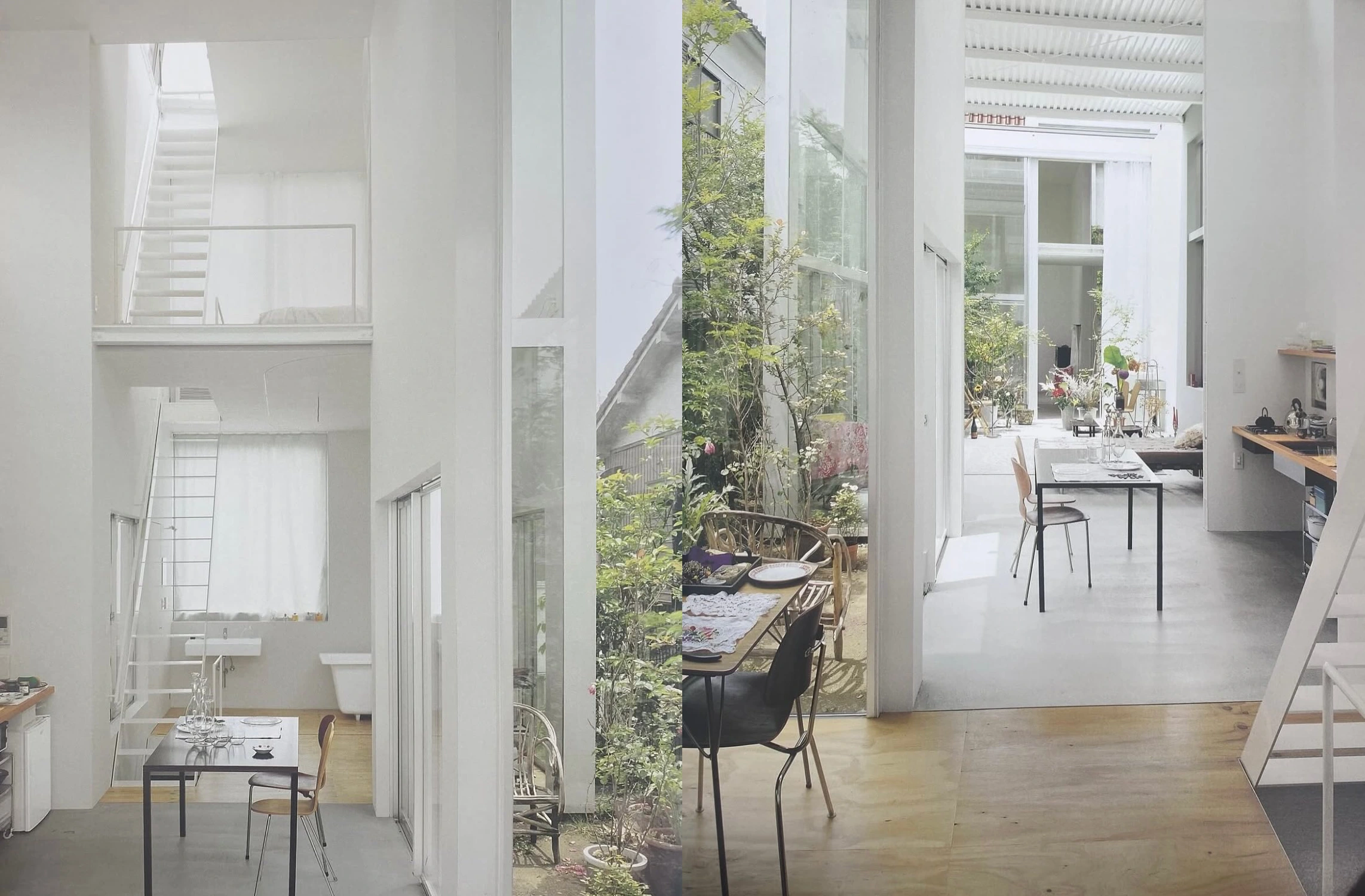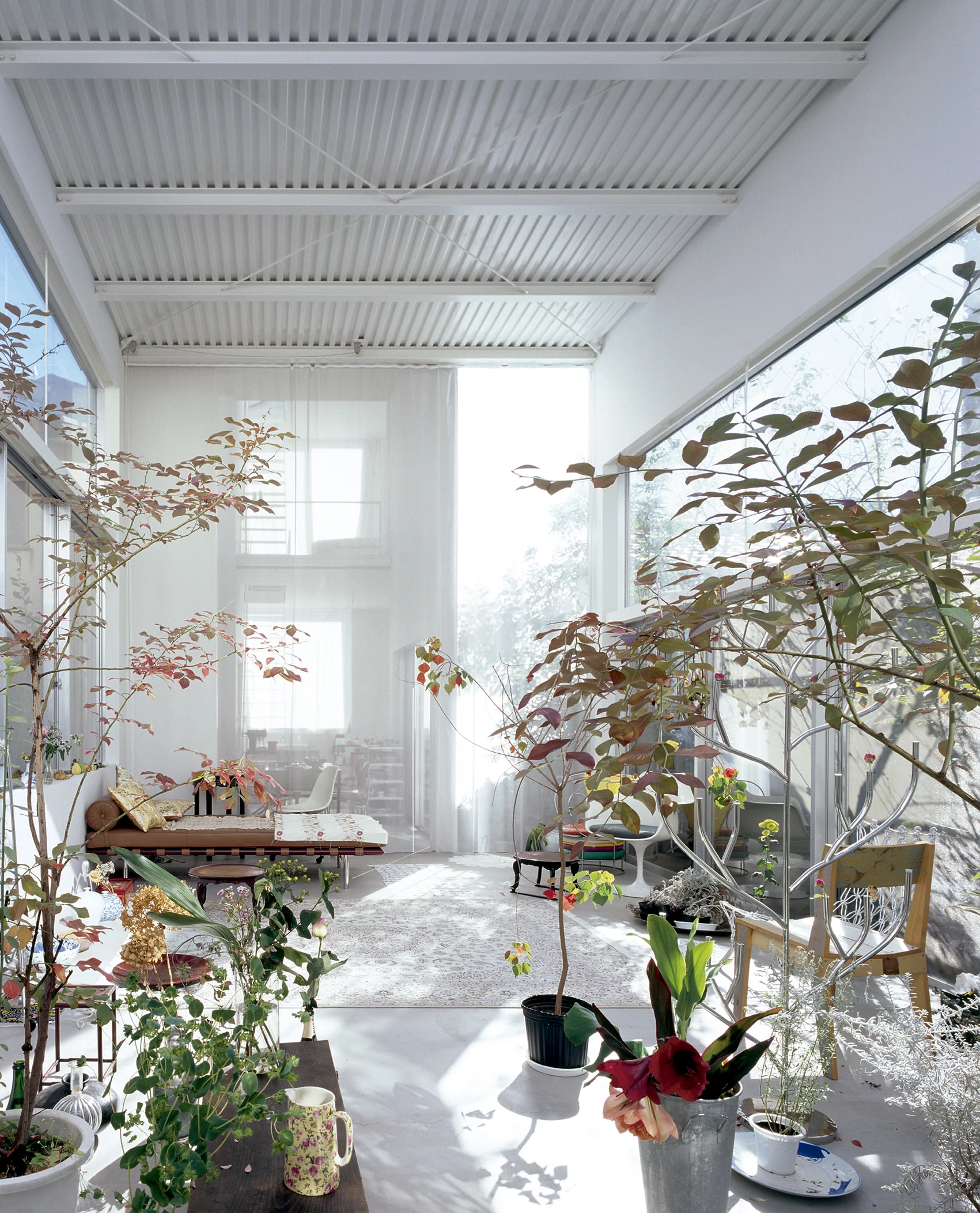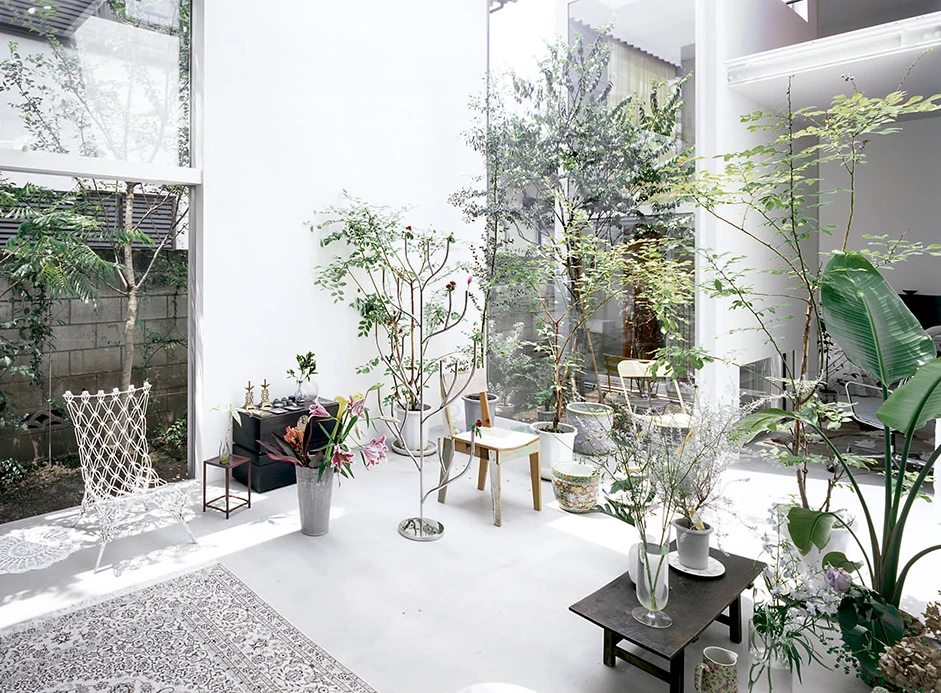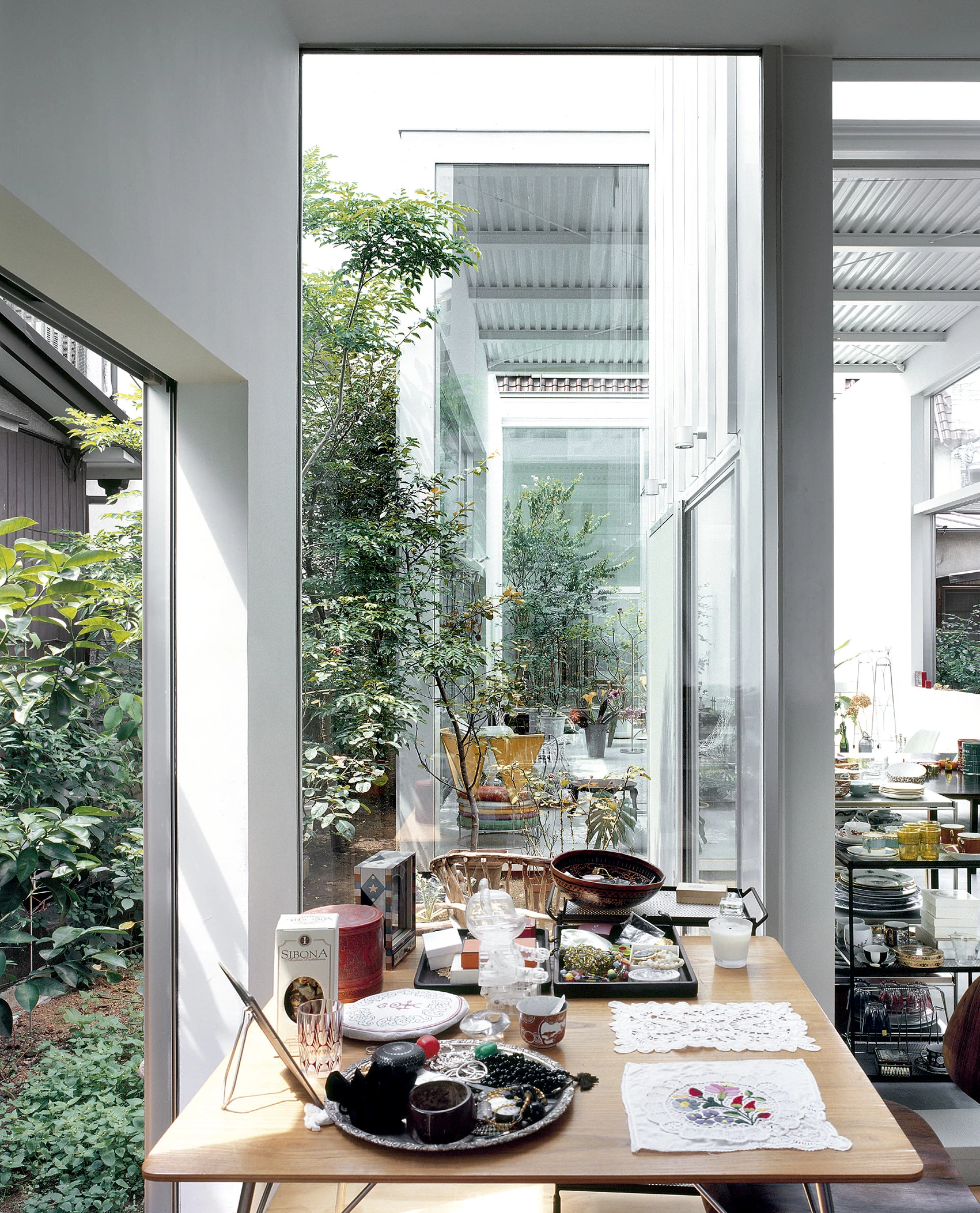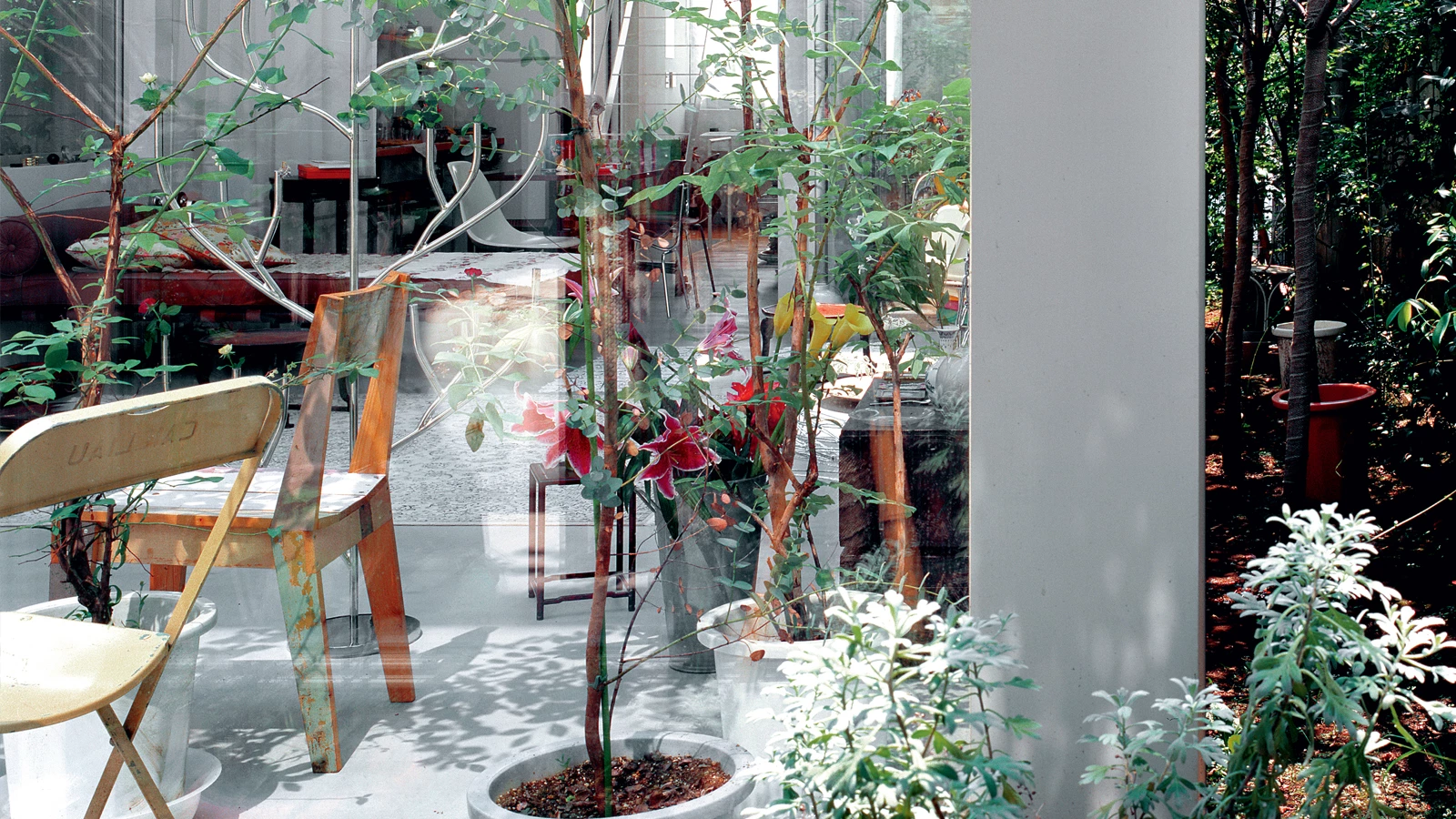House A, designed by Ryue Nishizawa in 2007, reimagines the archetype of the Tokyo residence through a sequence of cubic volumes arranged along a slender north-south plot.
Responding to a client’s wish for a home that could accommodate social gatherings, the architect transformed the conventional compartmentalized domestic program into a series of living-room-like chambers, each distinct yet seamlessly connected. Rather than creating a single monolithic structure, Nishizawa offset the blocks, allowing light to filter in from multiple directions while introducing intimate pockets of greenery between them.
This fragmentation creates a rhythm of interior and exterior encounters, a choreography of volumes and voids. Glass walls dissolve the boundary between room and garden, with slender metallic profiles serving as barely-there supports. Each cube is tailored to its function—some soaring, others modest—yet together they form a continuum of openness. At the heart of the house lies a lofty sun room capped by an operable skylight, a space that erases the threshold between interiority and Tokyo’s shifting daylight.
The house’s design is not simply about maximizing light on a narrow site but about rethinking how architecture can host social life. Instead of gathering around a single living area, guests move through a procession of spaces, each with its own atmosphere, its own view of the surrounding gardens. The house thus becomes less a container and more a landscape—an architecture of fragments stitched together by air, light, and conviviality.
In House A, Nishizawa captures a subtle tension between domestic intimacy and collective openness, crafting a residence that is at once a private retreat and an open stage for celebration. It is a house of thresholds, where walls blur, light bends, and architecture itself becomes the host.

